Protecting the pristine: Europe’s last truly “wild” waterways
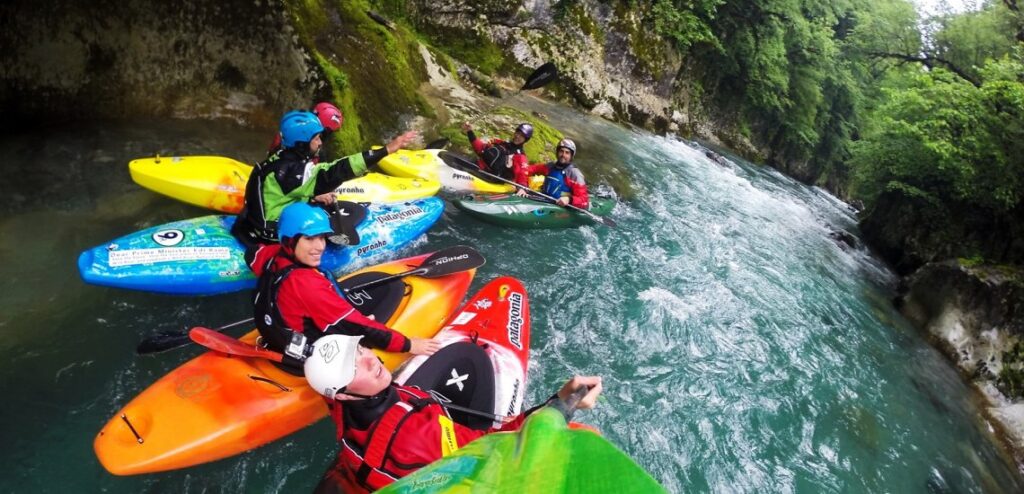
Cameras, kayaks, test tubes, tree saplings, and lawyers: this is how civil society is coming together to save the blue gem of the Balkans
By Shaun Hurrell
Header Image: Kayaking Balkan rivers to protest against the Balkan dam boom © Balkan Rivers Tour
As cloud forms, the first raindrop falls from the sky and splashes from a flower petal into alpine soil. Here the droplet is joined by more and is pulled downwards, beneath paw tracks of the elusive Balkan lynx and into a woodland stream, pauses for a moment in a marsh, then, gushes over smooth limestone, past dancing dragonflies and into a strong torrent that feeds into ice cold Lesser Prespa Lake, on the southern border of Macedonia, pierced by heron beaks searching for fish. The droplet has become a lake. But the journey is not over, this is just the beginning of the Drin River Basin: the water then flows underground past white cave-dwelling creatures to ancient Lake Ohrid, crosses the border into Albania and heads northwest for hundreds of kilometres where it connects with Lake Skadar, home to the world’s largest and rarest pelican species, and widens as it reaches the Adriatic Sea at the amphibian-rich Bojana Delta on the border with Montenegro.
“It’s a living system, profoundly bound with its people”, says Thomais Vlachogianni, Programme Officer of the Mediterranean Information Office for Environment, Culture and Sustainable Development (MIO-ECSDE). Home to Europe’s last truly “wild” rivers, the basin of the Drin River is still a huge, untamed natural environment, and arguably one of the most important freshwater system in Europe. In MIO-ECSDE’s short documentary entitled Echoes from the Drin, subtle, yet deeply crafted natural scenes evoke the feeling that wildlife – from the unseen minutiae to the flamboyantly remarkable – humans – from the smiles of nature tourists to the livelihoods of traditional herders – and the geological and hydrological processes that form this vast river basin, are all interconnected.
Echoes from the Drin is a result of a project, Act4Drin, granted by the Critical Ecosystem Partnership Fund (CEPF) in the Mediterranean – the support coordination of which is done by BirdLife’s regional expert officers on the ground. But like Drin’s streams and tributaries running between lakes, forests and crisscrossing the borders of five Balkan countries, CEPF’s investment has altogether connected 17 projects in the region that together have raised awareness and empowered local civil society groups to conserve freshwater ecosystems in this incredible landscape. But why does this special basin need so much attention?

“It’s a living system, profoundly bound with its people”,Thomais Vlachogianni, Programme Officer of the Mediterranean Information Office for Environment, Culture and Sustainable Development
“The Drin Basin is an area with very ancient signs of human civilisation, and its rivers have never stopped flowing since those times,” says Borut Rubinič, Programme Officer for the Balkans as part of the CEPF Mediterranean team and based at DOPPS/BirdLife Slovenia. “Combining three huge tectonic lakes, it’s incredibly species-rich, and many endemic species, and humans, are all supported by this water source. Without water, there is no life, so connecting people with the sustainable use of water is crucial.”
However, the Drin River Basin, its wildlife, and indeed the rest of the Balkans, could soon become much less pristine. Uncontrolled development, pollution, litter, illegal hunting, and new craze of hydroelectric dams loom, and as this touristic part of Europe rapidly grows and aims for accession into the European Union, CEPF is ensuring Balkan civil society is well informed and prepared enough to defend their natural jewels. “For many of us, water just flows or swirls”, says Thomais, “but little do we know the valuable functions and services it graciously offers, or what consequences our choices and actions have.” For conservationists like Thomais and Borut the value of a pristine Drin Basin is clear, but to others in Macedonia, Montenegro and Albania, it is not necessarily appreciated. Freshwater habitats in the Balkans are unique, and CEPF grantees have been pushing that message, as well as researching, protecting and restoring them.
Five countries, with sometimes troubled relations, come together in the Drin Dialogue to better manage the river basin
With training, educational films, awareness-raising material and showcases of best practices in freshwater biodiversity conservation and restoration, the Act4Drin project has been a friendly public face for a five-country institutional process called the Drin Dialogue that is taking a more integrated approach to the management of the complete river basin. By explaining how to preserve biodiversity and freshwater, how this changes everyday life and alternative livelihoods, it’s all about ensuring local people are included and inspired to take action. “The Act4Drin project may have come to its end, but it is leaving behind a rich and lasting legacy”, says Thomais. MIO-ECSDE has also played a big role in linking up lots of civil society groups in the region to ensure this public action continues into the future.
One such link is with the Macedonian Ecological Society (MES; BirdLife Partner) who have been getting their feet wet in glacial lakes, bogs and streams on Jablanica Mountain, which borders with Albania and feeds into the Drin. A truly isolated, well-preserved area, the mountain’s forests are a refuge for lynx, wolves and bears, but that did not phase the team of expert hydrobiologists who ventured under the canopy to assess the area’s habitats, species and pollution, as part of a pilot study on how a water basin can be used sustainably. “Water from this mountain feeds the whole area,” says Ivana Lozanovska, from MES, “Good forestry practice up here is important for flood protection, and is something that can be replicated elsewhere.” As well as gaining a new understanding of the status of the wildlife, and producing guidelines on sustainability for the forestry industry, the team discovered a new species on endemic snail. “The project has shown that without great scientific research as a foundation for conservation, we could lose something without ever knowing it existed”, says Borut. Already a National Park on the Albanian side, the next aim is to secure similar protection for the Jablanica catchment in Macedonia.
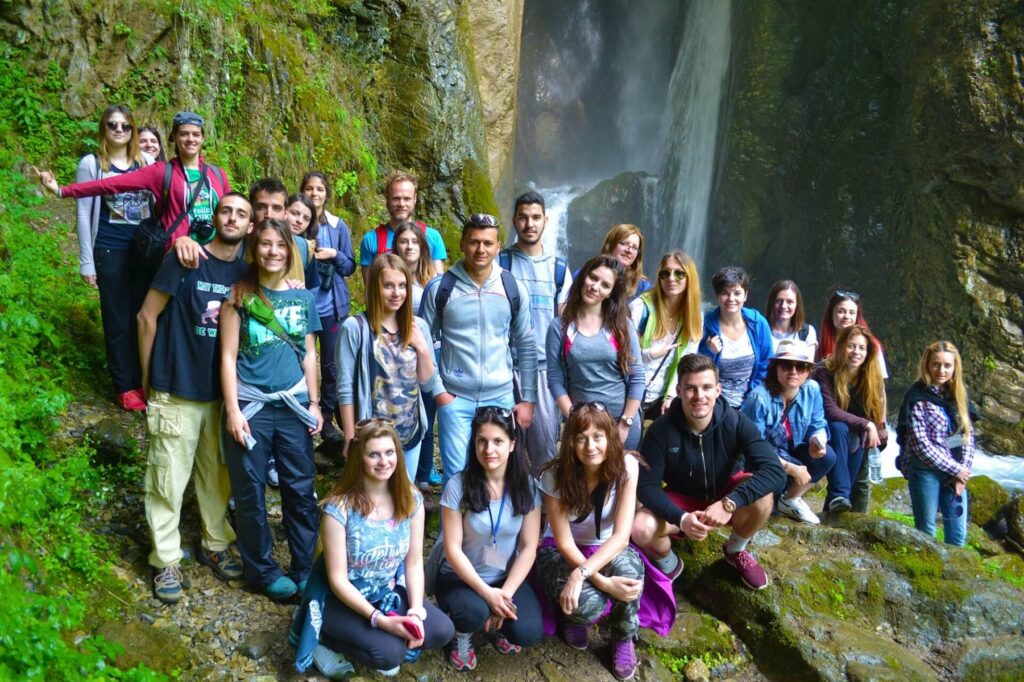
Conserving a water basin is not just about water.
Following the Drin’s flow into Albania, you can find Albaforest, who are putting in a real community effort to make up for the legacy of a past communist dictator, Enver Hoxha, who, some say to see potential “approaching” enemies, during his 40-year long regime ordered massive deforestation. As well as terrible societal impacts under Hoxha’s rule, Albania’s soil has since been exposed to erosion, and now there is a logging ban that will last for ten years. Albaforest has so far planted 100,000 native trees to reinforce riverbanks, and will also protect other Balkan forests from Albania’s resultant cross-border wood demand. Just across such a border, with Macedonia, is one of the oldest lakes on the planet, Lake Ohrid. In its waters, glides a living fossil, the Ohrid trout, together with 211 other unique species that have made sanctuary in the lake for millions of years. Here, surrounded by snow-capped mountains, some of the endemic species are already extinct; it’s a sensitive area where water for agriculture must be used sustainably. As such, three CEPF grantees (Gauss Institute, and Grashnica—from Macedonia; and Institute for Environmental Policy—from Albania) have united around Lake Ohrid to introduce a new system for the wise use of water on local farms, involving many local people for better agriculture that benefits biodiversity too.
Most Balkan waterways are in jeopardy from a goldrush of concrete blockades: 2,700 hydroelectric dams are proposed.
But now, Ohrid is facing an environmental disaster – you name it and they want to build it: a proposed hotel complex, ski resort, motorway, marina, and more. A watchdog organisation called Front 21/42 is providing strong advocacy and legal support to limit the damage, thanks to a CEPF grant. Initial successes include getting Lake Ohrid classified as a UNESCO Threatened Site for its natural value.
Ohrid isn’t the only place facing an imminent threat from development, however. In fact most Balkan waterways, including those in the Drin Basin, are in jeopardy from a goldrush of concrete blockades: 2,700 hydroelectric dams have been proposed in the region, in what’s been dubbed the “Balkan Dam Boom”, leaving hardly a Balkan river untouched. Without consideration of nature, dam construction would leave the region irreversibly scarred, and dams are already attributed to the decline of the migratory European eel (Critically Endangered), a long-lived and barely understood species whose traditional migration from Lake Ohrid to the Adriatic is disrupted.
Morača River, which surges through canyons in Montenegro and feeds in to Lake Skadar, is the focus of another CEPF project that is tackling the dam crisis head on. Another watchdog organisation, MANS, experienced in dealing with high-level corruption, is investigating the legal processes of the dams proposed on the Morača. Meanwhile, an Olympic athlete from Slovenia, local hero, biologist, and professional adventure kayaker, Rok Rozman, is kayaking the huge length of rivers for the cause as part of his Balkan Rivers Tour. Last year in the Morača leg, he spoke at a series of riverside events, in front of crowds of people who had cycled up the canyon on a trip organised by CZIP (BirdLife Montenegro): “Crystal clear streams, spectacular waterfalls, deep canyons, alluvial forest, and huge wild flows with vast gravel banks characterise this stunning network of rivers”, he says. “This wilderness can no longer be taken for granted. We have to fight strong in order to keep these special places intact, just the way wildlife and we like it most.”
CZIP and MANS have also been making a database of illegal cases of gravel extraction and encouraging local people to realise the value of sustainably-used riverine land over rivers damaged irreversibly by dams. Most of the dams are in the planning phase (proposed for construction in the next ten years), so planning, educating and mobilising civil society’s response now is crucial if we are to protect Europe’s last wild waterways.
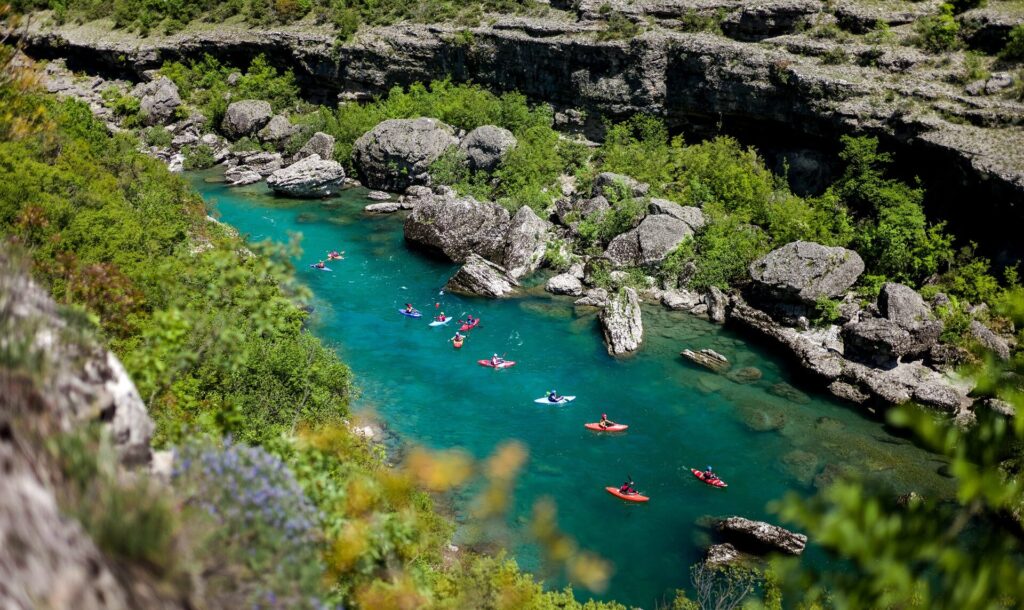
“This wilderness can no longer be taken for granted. We have to fight strong in order to keep these special places intact, just the way wildlife and we like it most.”Rok Rozman, Olympic athlete from Slovenia, local hero, biologist, and professional adventure kayaker.
From a single droplet to an entire watershed ecosystem, and the communities and creatures within, by investing in so many interconnected projects and building civil society, CEPF is aiming for a lasting legacy of protection for the entire Drin River Basin. “If we learn how to protect an area like this, with such huge richness, we can replicate this model in any other water basin in the world,” says Borut.
The Act4Drin travelogue ‘Living well in harmony with the Drin’
This work is through the investment of the Critical Ecosystem Partnership Fund (CEPF) in the Mediterranean.
Find out more at www.birdlife.org/cepf-med

The Critical Ecosystem Partnership Fund (CEPF) is a joint initiative of l’Agence Française de Développement, Conservation International, the European Union, the Global Environment Facility, the Government of Japan, the John D. and Catherine T. MacArthur Foundation, and the World Bank. Additional support in the Mediterranean Basin is provided by the MAVA Foundation. A fundamental goal is to ensure civil society is engaged in biodiversity conservation.
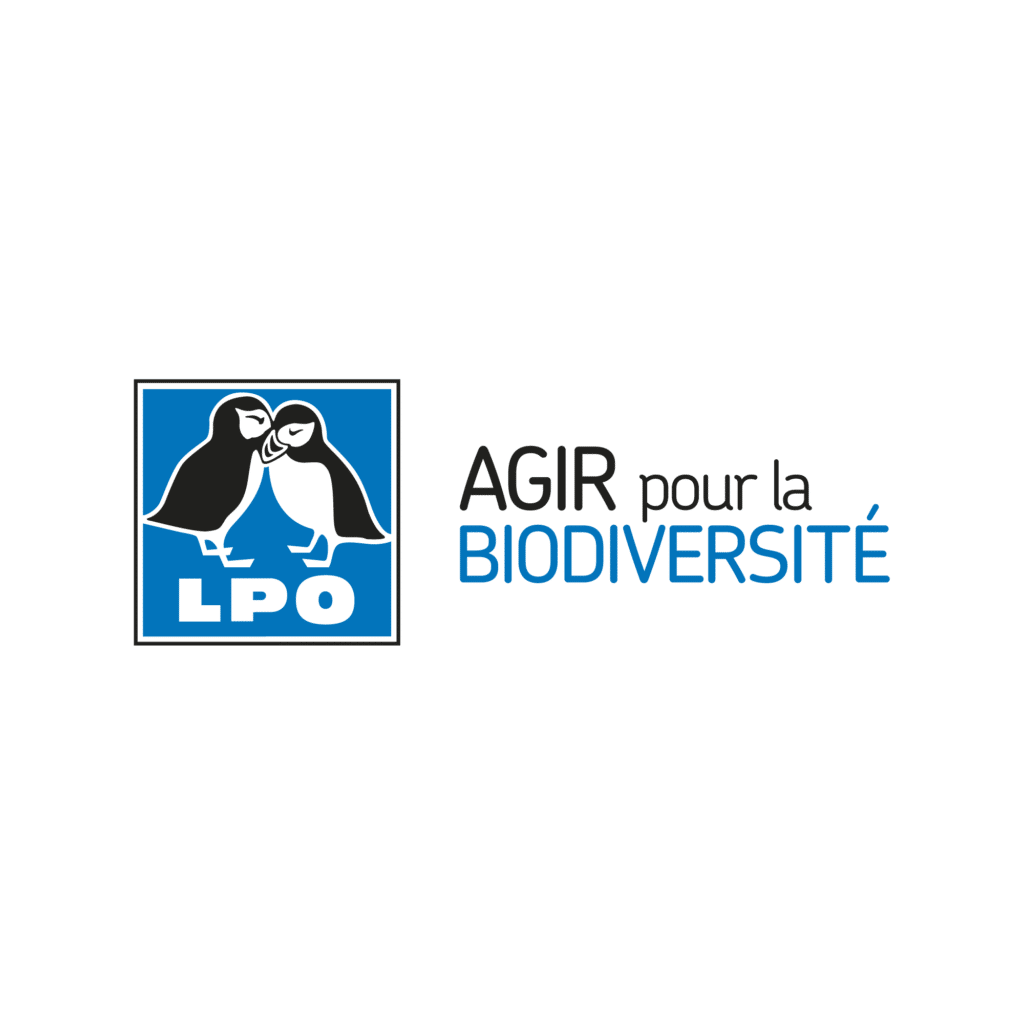

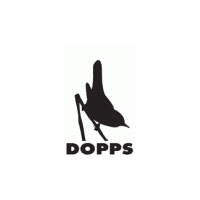
CEPF is more than just a funding provider
A dedicated Regional Implementation Team (RIT) (expert officers on the ground) guides funding to the most important areas and to even the smallest of organisations, helps build civil society in the region, and shares learned lessons and best practices such as those featured in this booklet. In the Mediterranean Basin Biodiversity Hotspot, the RIT is entrusted to BirdLife International and its national Partners LPO and DOPPS.